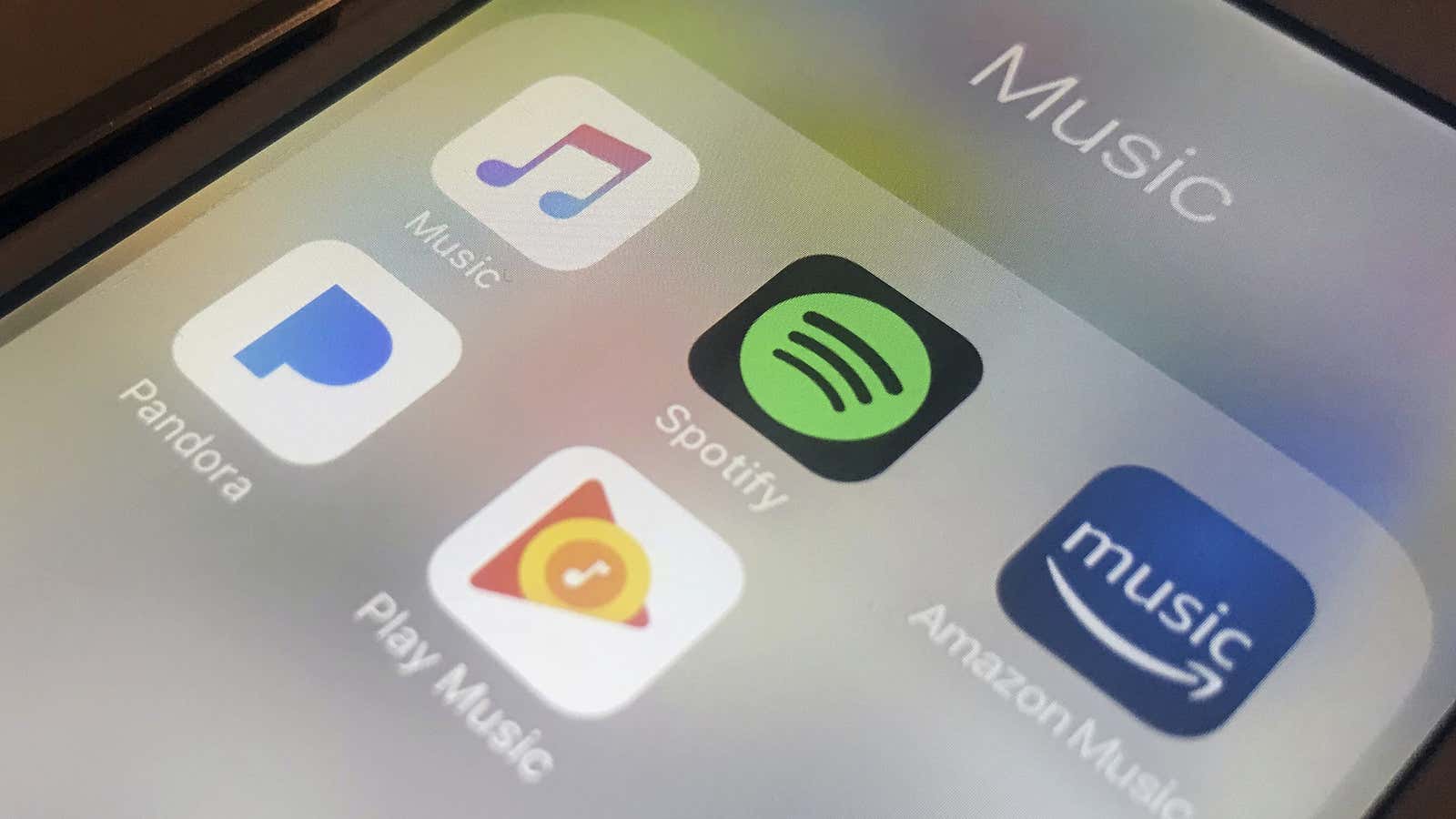The world’s biggest technology companies are changing how software makes them money.
Apple, Amazon, Microsoft, and Google have each grown their businesses on recurring payments, turning single-time customers into cash cows to be milked all year long.
These services are typically paid tiers layered on top of existing offerings that make the consumer experience more robust or simply less annoying. YouTube Red and Google Cloud storage are upgrades to free services from Google; Amazon Prime offers free two-day shipping and access to music and video content.
Apple’s services category, which includes the sales of apps, music, and subscriptions like Apple Music and iCloud, has ballooned to its second-biggest moneymaker behind the iPhone, raking in nearly $8.5 billion in the last quarter of 2017. It’s created a future for the the world’s most profitable company in which it does not necessarily need to fret about the fluctuations of individual iPhone sales, as it knows it’ll have a constant stream of additional revenue from the phones it does sell.
In many cases for these companies, these services can be billed monthly, or yearly at a discounted rate. This kind of revenue isn’t as inherently interesting as a snazzy new smartphone or smart speaker might be, but it’s a way for each of these companies to count on a certain amount of recurring revenue each quarter.
It’s what once kept IBM massively profitable, with the rentals of its mainframes in the 1970s and 1980s, but also made it complacent, as more and more computing was done by businesses and consumers on smaller machines. IBM is not what it once was by any stretch of the imagination, and provides a cautionary tale for what happens to a company that becomes too reliant on existing revenue streams and not what lies ahead.
Aside from the recurring expenses, there are downsides for customers. Paying monthly to make a product work the way it should is great until you can’t afford it. Not paying your iCloud bill could mean your photos are inaccessible, and if you don’t want to pay for Office 365 anymore, all the Word documents you created when you were a paying customer are next to useless. Other industries have seen similar pitfalls, including farming. A 2017 Motherboard report found that farmers were hacking their tractors to avoid mandatory service charges and instead repairing their own equipment. What happens when the technology central to our lives is privilege we must continually pay for rather than a product we buy once?
In Microsoft’s case—another company that once did not see a rising tide that would dramatically alter its business—the company has switched to pushing a subscription model for its Office 365 software, sweetening the pot with free Skype minutes and cloud storage. Customers can pay $150 to have Office 365 on one computer, or $99 per year for five computers plus a litany of perks. The plan is working: Microsoft announced in its earnings report earlier this week that it has more than 29 million Office 365 subscribers .
This model is so important to Amazon that analysts like Cowen have started tracking Prime sign-ups as an indicator of business health, writing “we continue to view Amazon Prime as the most important driver of the retail business.” And 2017 was the service’s best year ever.
Despite the money it’s making, services are still more important to software companies like Microsoft than retail giants like Amazon. While services counted for nearly 31% of Microsoft’s revenue in the last quarter of 2017, the sector only made a smidge more than 5% of Amazon’s business over the same time period. Amazon’s enterprise cloud service business, Amazon Web Services, is its own beast. Amazon reports it separately from services it sells to consumers. This past quarter, it generated over $5 billion in revenue on its own, accounting for about 9% of the company’s revenue for the period.
